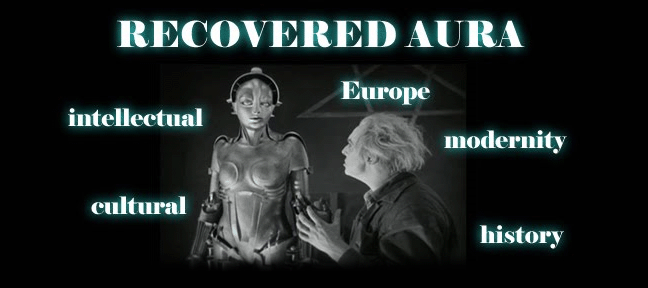From pre-WWI Vienna to Nazi Germany, this week reveals a lot of highly politicized concern with the arts. But who thought the arts were really so important, and why?
1. Why are Loos's (offensive) observations on "primitive" peoples and criminals relevant to a discussion of modern architecture? Is this just provocation? What else is at stake?
2. The German Werkbund (see more here) was an association of artists, craftsmen, and industrialists who sought to create new ways of collaborating in order to forge a modern, national style in everything from furniture and silverware to architecture. What are the core concerns behind van de Velde's objections to Muthesius's vision for the Werkbund?
3. What is significant about the way Gropius wanted to link the arts and the crafts (or "applied arts")? The Bauhaus, as he points out, resulted from just such a merger. Was it political to do this?
4. In Schlemmer's Bauhaus manifesto, how does he portray the cultural crisis of the age? How was an art school supposed to respond to that?
5. Why, according to Benjamin, does fascism (by which he means also Nazism) make the political aesthetic? What does that mean? Why, from a Marxist-leftist point of view, is that a bad thing?
6. How are the tasks of the modern artist or writer in the USSR and Nazi Germany, as presented by Zhdanov and Hitler, different? What deeper differences between the two regimes do these differences reflect?
7. How are the tasks of the modern artist or writer in the USSR and Nazi Germany, as presented by Zhdanov and Hitler, similar? What broad concerns about culture do the two regimes seem to have in common?
And now, some questions from Group 9:
1. In Adolf Loos’ article “Ornament and Crime,” he wrote that ornament was “produced by criminals.” What do you think he meant by this? How could ornamentation be “criminal” towards art, economy, and health?
2. What were the chief aims and beliefs of Muthesius and Van de Velde concerning the artistic disposition of the members of the Werkbund? What, if anything, did they agree on within the “Werkbund theses and antitheses?”
3. Whose main viewpoint, Muthesius's or Van de Velde's, would most likely satisfy the artistic demands of Hitler and his House of German Art?
4. Given the era in Weimar when the Bauhaus was established, how were the artistic beliefs of the Bauhaus representative of erecting a "cathedral of Socialism"? In what ways did the Bauhaus provide a direct political commentary? (Schlemmer, pg 69)
5. In Werner Graeff’s document, “The new engineer is coming,” what was the impact of the Bauhaus movement on artistic expression during that period of time? In Graeff’s eyes, how did the blurring lines between art, architecture, and design help turn artists into “engineers?”
6. What did Zhdanov interpret Stalin to mean when he claimed Soviet literature writers were, "the engineers of human souls?" How did he explain the context of socialist realism in Soviet literature? (Pg 225)
7. What was Hitler’s vision for the art that should be displayed at the opening of the House of German Art? How does this vision enhance nationalistic feelings, as well as propagandist motives, that were both beginning to run rampant in Germany at this time?
8. What did Hitler feel the purpose of art was in regards to the portrayal of the German people? How did Hitler’s beliefs create schisms between the artistic community and the Nazi regime in regards to creativity and freedom of expression during this time?
9. Adolf Hitler, in his speech at the opening of the House of German Art, is quoted as saying, “the artist does not create for the artist, but for the people!” How could this curtailing of artistic expression possibly have benefited Hitler’s motives as well as the German people at this time?
Sunday, April 18, 2010
Subscribe to:
Post Comments (Atom)

No comments:
Post a Comment